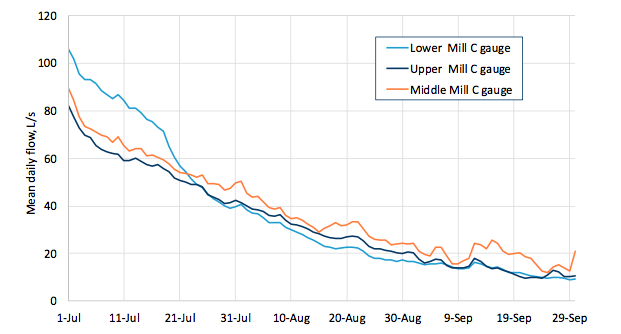Restoring Summer Base Flow with Decentralized Water Management
Abstract
Seasonal rainfall dynamics in Mediterranean-climate coastal California place pressures on humans and aquatic ecosystems. Without rainfall during summer, residents and land managers commonly turn to streams and adjacent shallow aquifers to meet domestic, irrigation, and recreational water needs, often depleting the water necessary to support stream biota. The potential for adverse ecological impacts within this coupled natural-human system has led to interest in restoring summer base flow (especially for federally protected steelhead coho salmon, which depend on flow through the summer dry season for juvenile survival) through methods such as reducing dry-season water abstractions. Characterizing constraints and opportunities has proven useful for planning streamflow restoration in Mediterranean-climate coastal California. Biophysical parameters such as ample rainfall and very low summer discharge are critical considerations, but institutional parameters are equally important: regional management practices and state laws can inhibit streamflow restoration, and implementation is dependent on interrelationships among residents, agency staff, and other stakeholders (which we term the egosystem) within each watershed. Additionally, while watershed-scale spatial analysis and field-based evaluations provided a solid foundation for exploring streamflow restoration needs, adaptation based on information from local stakeholders was often essential for prioritizing projects and understanding whether projects will have their intended benefits.






